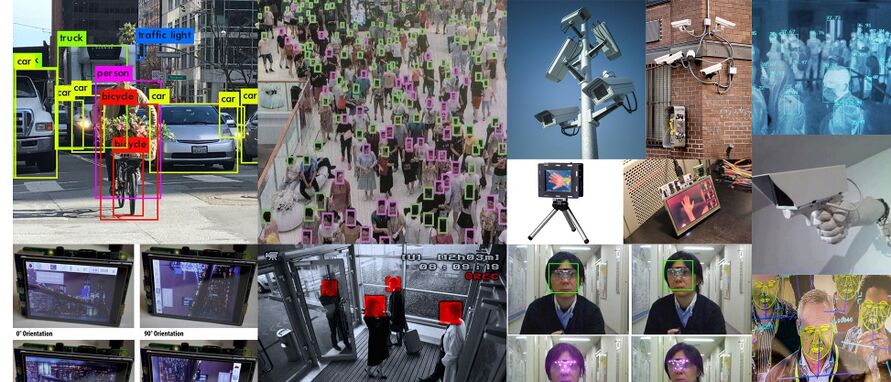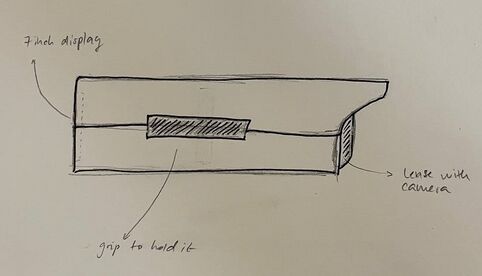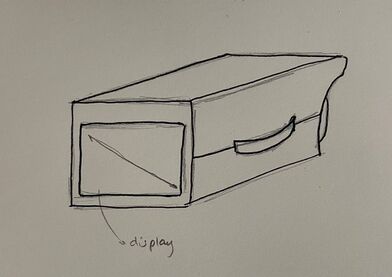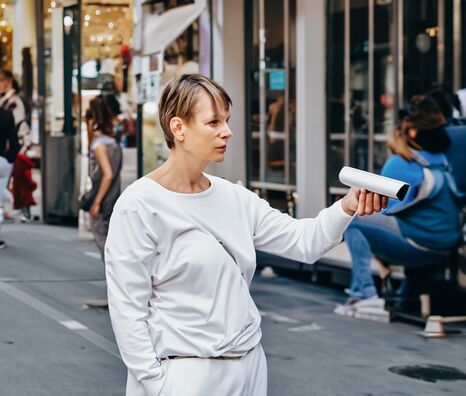User:Berna Bereit Project That May or May Not Be Made: Difference between revisions
Berna Bereit (talk | contribs) No edit summary |
Berna Bereit (talk | contribs) |
||
| (8 intermediate revisions by the same user not shown) | |||
| Line 1: | Line 1: | ||
These proposals originally were developed in this pad, but not all of them made it to the wiki page: https://pad.xpub.nl/p/bernadette-geiger-t3-methods. The accompanied research and developing process done for this project can be read here: https://pad.xpub.nl/p/bernadette-geiger-re-observer | These proposals originally were developed in this pad, but not all of them made it to the wiki page: https://pad.xpub.nl/p/bernadette-geiger-t3-methods. The accompanied research and developing process done for this project can be read here: https://pad.xpub.nl/p/bernadette-geiger-re-observer | ||
Here you can find the content of the project itself: https://pad.xpub.nl/p/bernadette-geiger-re-secure-content | |||
Explore other May or May Not Be Made Projects here: [[RapidPrototypeandProject that May]] | Explore other May or May Not Be Made Projects here: [[RapidPrototypeandProject that May]] | ||
== re- | == re-secure == | ||
=== What is it? === | === What is it? === | ||
"re- | "re-secure" is an installation that unfolds the insight of a security camera, making transparent what these semi-hidden cameras see and questioning it's purpose for security. | ||
In the aesthetically seamless | In the form of an aesthetically seamless surveillance camera, users assume the role of observers by engaging with a fictional security device. By peering through the camera's eyepiece, they view a 7-inch LCD display that presents a short video. This video provides insights into various security cameras, elucidating their purposes, the entities that employ them, their visual capabilities, and the data they collect. In the subsequent segment, the narrative delves into the personal dimension of feeling (un)secure, offering a critical perspective on security systems. At the conclusion of the video, viewers are prompted to reflect on their own sense of security. Throughout the viewing experience, the visitors remain stationary, fully focused on the video while becoming performatively a surveillance camera themselves. | ||
=== Why make it? === | === Why make it? === | ||
In the modern urban landscape, surveillance systems are often presented as an essential part of a comprehensive security infrastructure. However, these systems, which are supposed to protect us, consist of numerous small black boxes that record data opaquely. On the outside, they appear to be subtle objects, inconspicuously integrated into the cityscape and easy to overlook. But inside they harbour a complex system that collects a wide range of data and, depending on the legal situation, can be connected to personal information to trace people. | In the modern urban landscape, surveillance systems are often presented as an essential part of a comprehensive security infrastructure. However, these systems, which are supposed to protect us, consist of numerous small black boxes that record data opaquely. On the outside, they appear to be subtle objects, inconspicuously integrated into the cityscape and easy to overlook. But inside they harbour a complex system that collects a wide range of data and, depending on the legal situation, can be connected to personal information to trace people. | ||
The "re- | The "re-secure" is an post-optimal object that draws attention to the topics of surveillance. | ||
Imagine yourself in the role of the observer. You become aware of the numerous surveillance points and their potential range. Your attention is focussed on the subtle presence of these objects, which you might hardly have noticed before. You start to ask yourself questions: What data is being collected? Who has access to this information? How is it being used? | Imagine yourself in the role of the observer. You become aware of the numerous surveillance points and their potential range. Your attention is focussed on the subtle presence of these objects, which you might hardly have noticed before. You start to ask yourself questions: What data is being collected? Who has access to this information? How is it being used? | ||
| Line 37: | Line 39: | ||
=== Previous practice === | === Previous practice === | ||
Surveillance cameras have become part of our everyday cityscape. Yet the small devices are usually very inconspicuous. The consequences can be all the more serious, as a current example from Saxony, Germany shows: a new police law was passed in 2019. The use of video surveillance with biometric facial recognition by the state police within a 30-km radius of the Saxon federal border has put almost half of the entire State under surveillance, leading to an outcry and a lawsuit. | |||
The pixel glasses make a contribution to self-determined technological use in the style of already existing projects. For example, the pixel glasses protect against involuntary facial recognition by surveillance cameras. This becomes particularly significant in activist operations. Taking the example of protests in Hong Kong (2019), one can see that activists could be recorded by cameras and assigned by AI. The pixel glasses support political engagement and prevent suppression of different opinions, piracy for privacy. | |||
Find out more about the project here: <nowiki>http://bernadettegeiger.com/working_with_against_technology.html</nowiki> | |||
=== Installation === | |||
The object will be an interactive installation. Visitors can take the security camera and view the video in the inside of the case. A pair of headphones can also be plugged in to listen to the video, additionally subtitles will be displayed in the video. | |||
=== Relation to a wider context === | === Relation to a wider context === | ||
| Line 51: | Line 60: | ||
=== Additional Reference === | === Additional Reference === | ||
==== Simone C. Niquille ==== | |||
[<nowiki>https://www.wired.com/2013/10/thwart-facebooks-creepy-auto-tagging-with-these-bizarre-t-shirts/</nowiki>] | |||
The artist Simone C. Niquille developed a series of anti-face recognition objects as part of her graduation project (2013) at the Sandberg Institute Amsterdam. Her work was based on the Facebook algorithm, which can recognise faces in images and then makes suggestions for people's markings. Her three projects are presented below: | |||
'''''FaceValue''''' | |||
FaceValue is an exploration of the history and significance of the human face as an interface and its new value in the age of facial recognition technology. | |||
'''''Realface Glamouflage''''' | |||
"REALFACE Glamouflage" is a T-shirt collection printed with patterns of the faces of famous people such as Michael Jackson, Britney Spears and Barack Obama. This is intended to prevent facial recognition algorithms from recognising people. | |||
'''''Facebay''''' | |||
Facebay is a library for new face options. It provides users with a selection of other people's faces. But you can also use and manipulate your own face (vgl. Leonardy 2013). | |||
==== Data Masks Series ==== | |||
The Data Masks Series project by Sterling Crispin (2014) takes a critical look at the aggressive over-development of surveillance technologies and how they are changing human identity and the interaction between humans and technology. The term technology here refers to individual devices and networked systems such as cameras and software. He works with the technique of reverse engineering facial recognition and image correlation techniques. The results of the research are various 3D-printed masks that have been developed algorithmically. The aim of the project is not to avoid facial recognition technologies, but rather to show the machine what it is looking for. To hold up a mirror to it, so to speak. The masks are used for protest actions, poetry and civil disobedience (vgl. Crispin 2014). | |||
==== CV Dazzle ==== | |||
CV Dazzle, a project by artist Adam Harvey, explores the possibilities of camouflaging oneself from machine facial recognition by styling hair and make-up. The project sees itself as a development of strategies and concepts, whereby each design is individually tailored to algorithms and faces. The aim is to encourage people to develop and wear their own looks. The images shown here serve as a template and inspiration (vgl. Harvey 2010). | |||
==== Reflectacles ==== | |||
[https://www.reflectacles.com/<nowiki>]</nowiki> | |||
Reflectacles are glasses specifically designed to trick facial recognition systems. They can be used against infrared as well as systems that use 3D infrared mapping/scanning. Two analogue techniques are used for this purpose: infrared-blocking lenses on the one hand and reflective frames on the other (vgl. Urban Spectacles 2022). | |||
==== Further projects: ==== | |||
* Iris van Herpen | |||
* Jing-Cai Liu’s Wearable Face Projector (2017) | |||
* Jip van Leeuwenstein’s Surveillance Exclusion Mask | |||
* Ewa Nowak’s INCOGNITO mask | |||
* <nowiki>https://qz.com/10-fashions-to-help-you-confuse-facial-recognition-syst-1851112545</nowiki> | * <nowiki>https://qz.com/10-fashions-to-help-you-confuse-facial-recognition-syst-1851112545</nowiki> | ||
* <nowiki>https://www.businessinsider.nl/clothes-accessories-that-outsmart-facial-recognition-tech-2019-10?international=true&r=US</nowiki> | * <nowiki>https://www.businessinsider.nl/clothes-accessories-that-outsmart-facial-recognition-tech-2019-10?international=true&r=US</nowiki> | ||
| Line 60: | Line 103: | ||
=== Sources === | === Sources === | ||
Crispin, Sterling (2014): Data Masks Series. Online. URL: <nowiki>http://www.sterlingcrispin.com/data-masks.html</nowiki> | |||
Deutsches Hygiene Museum Dresden (DHMD) (2022): FAKE Die ganze Wahrheit. Eine Ausstellung in Kooperation mit dem Stapferhaus (CH) kuratiert von Daniel Tyradellis. Die dazugehörige Website: <nowiki>https://www.dhmd.de/ausstellungen/vorschau/fake</nowiki> | |||
Forbes (2021): HERR DER SINNE. In: Forbes. Online. URL: <nowiki>https://www.forbes.at/artikel/herr-der-sinne.html</nowiki> | |||
Frankfurter Allgemeine (faz) (2015): Smarte Socken und elektronische Tattoos. Online. URL: <nowiki>https://www.faz.net/aktuell/wirtschaft/netzwirtschaft/zukunft-der-wearables-smarte-socken-und-elektronische-tattoos-13926968.html</nowiki> | |||
Genzmer, Jenny und Ufer, Gesa (2020): Jenseits von Siri und Alexa. In: Deutschlandfunk Kultur. Online. URL: <nowiki>https://www.deutschlandfunkkultur.de/cyberfeminismus-jenseits-von-siri-und-alexa-100.html</nowiki> | |||
Gesellschaft für Freiheitsrechte e.V. (2020). Online. URL: <nowiki>https://freiheitsrechte.org/</nowiki> | |||
Grumbach, Detlef (2016): Wenn Mensch und Maschine verschmelzen. In: Deutschlandfunk. Online. URL: <nowiki>https://www.deutschlandfunk.de/kybernetik-wenn-mensch-und-maschine-verschmelzen-100.html</nowiki> | |||
Haraway, Donna (1985.): Manifesto for Cyborgs: Science, Technology, and Socialist Feminism in the 1980‘s. In: Socialist Review 80. S. 65-108. | |||
Harvey, Adam (2010): Computer Vision Dazzle Camouflage. Online. URL: <nowiki>https://cvdazzle.com/</nowiki> | |||
Leonardy, Ross (2013): FACEVALUE by SIMONE NIQUILLE. In: O FLUXO. Online. URL: <nowiki>https://www.ofluxo.net/facevalue-by-simone-niquille/</nowiki> | |||
Lordick, Marina (2016): Transhumanismus: Die Cyborgisierung des Menschen. In: zukunftsInstitut. Online: URL: <nowiki>https://www.zukunftsinstitut.de/artikel/transhumanismus-die-cyborgisierung-des-menschen/</nowiki> | |||
Mareis, Claudia: Unsichtbares Design und post-optimale Objekte. Interfacedesign und Entmaterialisierungsdiskurse seit circa 1960. In: Bartz, Christina;Kaerlein, Timo;Miggelbrink, Monique;Neubert, Christoph: Gehäuse: Mediale Einkapselungen. Paderborn: Fink 2019, S. 93-114. DOI: 10.25969/mediarep/3961. | |||
Meyer, Bertolt (2020). Der DJ mit der musikalischen Armprothese. In: Deutschlandfunk. Online. URL: <nowiki>https://www.deutschlandfunkkultur.de/psychologe-bertolt-meyer-der-dj-mit-der-musikalischen-100.html</nowiki> | |||
M. Eifler (2020): Prosthetic Memory. In: Ars Electronica. Online. URL: <nowiki>https://starts-prize.aec.at/de/prosthetic-memory/</nowiki> | |||
Schacht, Marie (2010): Natürliche Interaktion mit Tangible User Interfaces. In: TU Dresden. Online. URL: <nowiki>https://tu-dresden.de/ing/informatik/smt/mg/ressourcen/dateien/studentische-arbeiten/2010_Beleg_Schacht.pdf?lang=de</nowiki> | |||
Urban Spectacles (2022): Reflectacles. Chicago. Online. URL: <nowiki>https://www.reflectacles.com/creator-info</nowiki> | |||
Latest revision as of 16:21, 29 May 2024
These proposals originally were developed in this pad, but not all of them made it to the wiki page: https://pad.xpub.nl/p/bernadette-geiger-t3-methods. The accompanied research and developing process done for this project can be read here: https://pad.xpub.nl/p/bernadette-geiger-re-observer
Here you can find the content of the project itself: https://pad.xpub.nl/p/bernadette-geiger-re-secure-content
Explore other May or May Not Be Made Projects here: RapidPrototypeandProject that May
re-secure
What is it?
"re-secure" is an installation that unfolds the insight of a security camera, making transparent what these semi-hidden cameras see and questioning it's purpose for security.
In the form of an aesthetically seamless surveillance camera, users assume the role of observers by engaging with a fictional security device. By peering through the camera's eyepiece, they view a 7-inch LCD display that presents a short video. This video provides insights into various security cameras, elucidating their purposes, the entities that employ them, their visual capabilities, and the data they collect. In the subsequent segment, the narrative delves into the personal dimension of feeling (un)secure, offering a critical perspective on security systems. At the conclusion of the video, viewers are prompted to reflect on their own sense of security. Throughout the viewing experience, the visitors remain stationary, fully focused on the video while becoming performatively a surveillance camera themselves.
Why make it?
In the modern urban landscape, surveillance systems are often presented as an essential part of a comprehensive security infrastructure. However, these systems, which are supposed to protect us, consist of numerous small black boxes that record data opaquely. On the outside, they appear to be subtle objects, inconspicuously integrated into the cityscape and easy to overlook. But inside they harbour a complex system that collects a wide range of data and, depending on the legal situation, can be connected to personal information to trace people.
The "re-secure" is an post-optimal object that draws attention to the topics of surveillance.
Imagine yourself in the role of the observer. You become aware of the numerous surveillance points and their potential range. Your attention is focussed on the subtle presence of these objects, which you might hardly have noticed before. You start to ask yourself questions: What data is being collected? Who has access to this information? How is it being used?
This reflection leads to a critical examination of the omnipresence of surveillance and the balance between security and privacy. The opaque black boxes in the cityscape are more than just technical devices; they symbolise a field of tension in which the need for security must be weighed against the right to privacy.
Timetable
15.05 - 20.05: fully formulate concept + references/sources
21.05 - 28.05: think of technical aspects - How could it be built? What compontents do I need? Sketches for help
28.05: List for ordering electronics
29.05 - 05.06: Close primary research
05.06 - 19.06: production of product
20.06: testing
21.06 - 26.06: final changes + set up for SI24 lauch
27.06: SI24 launch built up
Previous practice
Surveillance cameras have become part of our everyday cityscape. Yet the small devices are usually very inconspicuous. The consequences can be all the more serious, as a current example from Saxony, Germany shows: a new police law was passed in 2019. The use of video surveillance with biometric facial recognition by the state police within a 30-km radius of the Saxon federal border has put almost half of the entire State under surveillance, leading to an outcry and a lawsuit.
The pixel glasses make a contribution to self-determined technological use in the style of already existing projects. For example, the pixel glasses protect against involuntary facial recognition by surveillance cameras. This becomes particularly significant in activist operations. Taking the example of protests in Hong Kong (2019), one can see that activists could be recorded by cameras and assigned by AI. The pixel glasses support political engagement and prevent suppression of different opinions, piracy for privacy.
Find out more about the project here: http://bernadettegeiger.com/working_with_against_technology.html
Installation
The object will be an interactive installation. Visitors can take the security camera and view the video in the inside of the case. A pair of headphones can also be plugged in to listen to the video, additionally subtitles will be displayed in the video.
Relation to a wider context
#antisurveillance #cctv #piracyforprivacy #whatismydataworth
Rapid prototype template
Additional Reference
Simone C. Niquille
[https://www.wired.com/2013/10/thwart-facebooks-creepy-auto-tagging-with-these-bizarre-t-shirts/]
The artist Simone C. Niquille developed a series of anti-face recognition objects as part of her graduation project (2013) at the Sandberg Institute Amsterdam. Her work was based on the Facebook algorithm, which can recognise faces in images and then makes suggestions for people's markings. Her three projects are presented below:
FaceValue
FaceValue is an exploration of the history and significance of the human face as an interface and its new value in the age of facial recognition technology.
Realface Glamouflage
"REALFACE Glamouflage" is a T-shirt collection printed with patterns of the faces of famous people such as Michael Jackson, Britney Spears and Barack Obama. This is intended to prevent facial recognition algorithms from recognising people.
Facebay
Facebay is a library for new face options. It provides users with a selection of other people's faces. But you can also use and manipulate your own face (vgl. Leonardy 2013).
Data Masks Series
The Data Masks Series project by Sterling Crispin (2014) takes a critical look at the aggressive over-development of surveillance technologies and how they are changing human identity and the interaction between humans and technology. The term technology here refers to individual devices and networked systems such as cameras and software. He works with the technique of reverse engineering facial recognition and image correlation techniques. The results of the research are various 3D-printed masks that have been developed algorithmically. The aim of the project is not to avoid facial recognition technologies, but rather to show the machine what it is looking for. To hold up a mirror to it, so to speak. The masks are used for protest actions, poetry and civil disobedience (vgl. Crispin 2014).
CV Dazzle
CV Dazzle, a project by artist Adam Harvey, explores the possibilities of camouflaging oneself from machine facial recognition by styling hair and make-up. The project sees itself as a development of strategies and concepts, whereby each design is individually tailored to algorithms and faces. The aim is to encourage people to develop and wear their own looks. The images shown here serve as a template and inspiration (vgl. Harvey 2010).
Reflectacles
[https://www.reflectacles.com/]
Reflectacles are glasses specifically designed to trick facial recognition systems. They can be used against infrared as well as systems that use 3D infrared mapping/scanning. Two analogue techniques are used for this purpose: infrared-blocking lenses on the one hand and reflective frames on the other (vgl. Urban Spectacles 2022).
Further projects:
- Iris van Herpen
- Jing-Cai Liu’s Wearable Face Projector (2017)
- Jip van Leeuwenstein’s Surveillance Exclusion Mask
- Ewa Nowak’s INCOGNITO mask
- https://qz.com/10-fashions-to-help-you-confuse-facial-recognition-syst-1851112545
- https://www.businessinsider.nl/clothes-accessories-that-outsmart-facial-recognition-tech-2019-10?international=true&r=US
- https://projectkovr.com/
- https://cybernews.com/privacy/anti-surveillance-fashion/
- https://yr.media/tech/guide-to-anti-surveillance-fashion/
Sources
Crispin, Sterling (2014): Data Masks Series. Online. URL: http://www.sterlingcrispin.com/data-masks.html
Deutsches Hygiene Museum Dresden (DHMD) (2022): FAKE Die ganze Wahrheit. Eine Ausstellung in Kooperation mit dem Stapferhaus (CH) kuratiert von Daniel Tyradellis. Die dazugehörige Website: https://www.dhmd.de/ausstellungen/vorschau/fake
Forbes (2021): HERR DER SINNE. In: Forbes. Online. URL: https://www.forbes.at/artikel/herr-der-sinne.html
Frankfurter Allgemeine (faz) (2015): Smarte Socken und elektronische Tattoos. Online. URL: https://www.faz.net/aktuell/wirtschaft/netzwirtschaft/zukunft-der-wearables-smarte-socken-und-elektronische-tattoos-13926968.html
Genzmer, Jenny und Ufer, Gesa (2020): Jenseits von Siri und Alexa. In: Deutschlandfunk Kultur. Online. URL: https://www.deutschlandfunkkultur.de/cyberfeminismus-jenseits-von-siri-und-alexa-100.html
Gesellschaft für Freiheitsrechte e.V. (2020). Online. URL: https://freiheitsrechte.org/
Grumbach, Detlef (2016): Wenn Mensch und Maschine verschmelzen. In: Deutschlandfunk. Online. URL: https://www.deutschlandfunk.de/kybernetik-wenn-mensch-und-maschine-verschmelzen-100.html
Haraway, Donna (1985.): Manifesto for Cyborgs: Science, Technology, and Socialist Feminism in the 1980‘s. In: Socialist Review 80. S. 65-108.
Harvey, Adam (2010): Computer Vision Dazzle Camouflage. Online. URL: https://cvdazzle.com/
Leonardy, Ross (2013): FACEVALUE by SIMONE NIQUILLE. In: O FLUXO. Online. URL: https://www.ofluxo.net/facevalue-by-simone-niquille/
Lordick, Marina (2016): Transhumanismus: Die Cyborgisierung des Menschen. In: zukunftsInstitut. Online: URL: https://www.zukunftsinstitut.de/artikel/transhumanismus-die-cyborgisierung-des-menschen/
Mareis, Claudia: Unsichtbares Design und post-optimale Objekte. Interfacedesign und Entmaterialisierungsdiskurse seit circa 1960. In: Bartz, Christina;Kaerlein, Timo;Miggelbrink, Monique;Neubert, Christoph: Gehäuse: Mediale Einkapselungen. Paderborn: Fink 2019, S. 93-114. DOI: 10.25969/mediarep/3961.
Meyer, Bertolt (2020). Der DJ mit der musikalischen Armprothese. In: Deutschlandfunk. Online. URL: https://www.deutschlandfunkkultur.de/psychologe-bertolt-meyer-der-dj-mit-der-musikalischen-100.html
M. Eifler (2020): Prosthetic Memory. In: Ars Electronica. Online. URL: https://starts-prize.aec.at/de/prosthetic-memory/
Schacht, Marie (2010): Natürliche Interaktion mit Tangible User Interfaces. In: TU Dresden. Online. URL: https://tu-dresden.de/ing/informatik/smt/mg/ressourcen/dateien/studentische-arbeiten/2010_Beleg_Schacht.pdf?lang=de
Urban Spectacles (2022): Reflectacles. Chicago. Online. URL: https://www.reflectacles.com/creator-info




